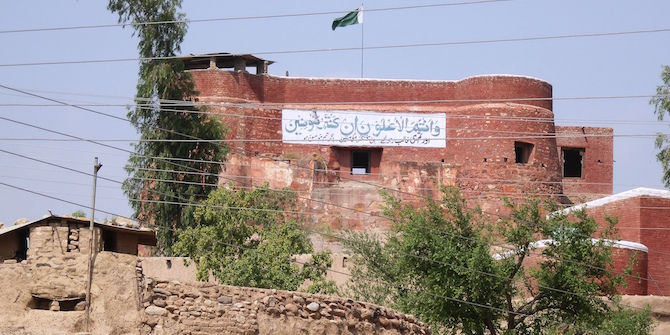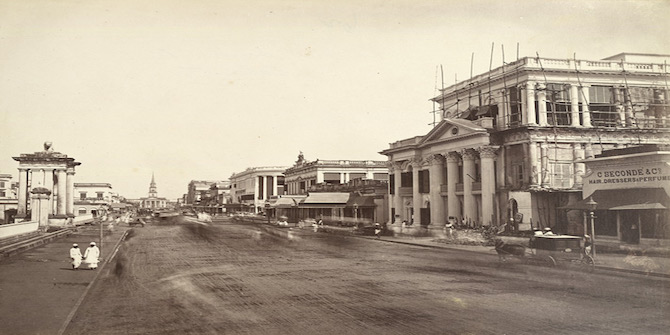Part of a series of books on Sexual Violence and Impunity in South Asia, Sohini Chatterjee (independent researcher) finds n pioneering intersectional feminist work on the gendered political economy of violence and impunity which uncovers institutional failings, lack of political will, racism and sexism in India.
Breaching the Citadel: The India Papers. Edited by Urvashi Butalia. Zubaan Books. 2018.
“It is bizarre that the two political opponents, the TMC and the CPM, so bitterly apart in political ideology, are similar in their actions and attitudes to sexual violence and violation of democratic procedures. The tradition of valorisation of impunity in Bengal was established by the Congress government and picked up by the LF [Left Front] with the politicisation of the police force; its cadres mastered the techniques of appropriating social institutions with criminals entering politics. The TMC has taken this process to a logical conclusion, eroding administrative and legal institutions and procedures with the leader playing the role of the investigator, judge and jury”, writes Rajashri Dasgupta in Breaching the Citadel: The India Papers I on the state of enduring impunity and miscarriage of justice in West Bengal despite the shift in regimes and the promise of transformative social change or ‘paribartan’ it had carried. Breaching the Citadel is part of the series on sexual violence and impunity in South Asia which explores historical as well as contemporary accounts of sexual violence in India offering a scathing indictment of the licentiousness granted by the state bolstering impunity. In doing so, it also visibilises the lived realities of survivors and their communities who mostly occupy marginalised locations in India’s socio-political hierarchy.
Dasgupta notes that in May 1990, when three women were gang-raped in Bantala, the ruling establishment of the Left Front, spearheaded by the Communist Party of India (Marxist) (CPIM), had refused accountability, with the then Chief Minister of the state, Jyoti Basu, casually remarking that ‘Such things happen [erokom to hoye thake]’, followed in quick succession by equally dismissive and derogatory remarks by the government’s Health Minister and the then State Information Minister, Buddhadeb Bhattacharya, who would a decade later go on to become the Chief Minister of West Bengal. The culture of impunity propped up by politicisation of sexual violence was entrenched in the protracted 34 year LF rule in West Bengal, reaching its ominous zenith in 2006 when women resisting forcible land acquisitions in Singur and Nandigram, as well as Adivasi women mobilising for development and dignity in Lalgarh, were subjected to state sponsored sexual brutality under the Left regime. Mamata Banerjee, then leader of the opposition in Bengal, agitated against violence and impunity, repeatedly and unsparingly foregrounding politically motivated rapes of women in Singur and Nandigram, across the country. However, immediately after TMC came to power in 2011, with Banerjee as the new Chief Minister, when an Adivasi woman alleged rape by Jawans in a village in Junglemahal, Banerjee ruled it out as fabrication. Moreover, when protests in Kamduni erupted over the rape and murder of a young college student, villagers who raised their voices were belligerently termed ‘Maoists’ and women activists of Maitree, a women’s rights network, were arrested on Maoist suspicion. Even though largesse of 1 lakh rupees was eventually given to the victim’s family along with promises of employment for her brothers by the TMC government, Dasgupta writes that the devious ways in which dissent was sought to be muzzled in Kamduni point to political enabling of sexual violence, impunity and mistrust of victims by the TMC government that had risen to power weaponising LF’s similar refusal of accountability.
Bani Gill’s chapter focuses on sexual violence against displaced Afghan and Burmese refugee women in Delhi who, owing to their precarious legal status combined with racialised and gendered Othering in the host state, experience sexual violence and are acutely vulnerable to it. Most Chin refugee women face continued harassment in their homes, neighbourhoods, at the hands of rogue landlords—primarily because of sexism and restricted mobility ensured by poverty—and also in informal, unorganised sectors where they have no bargaining power and are hence easily exploited. Violence suffered and/or survived by them often goes unreported since women fear losing their homes and jobs. Afghan refugee women working as freelance translators for medical tourists in Delhi also find themselves susceptible to abuse and oppression. Owing to the nature of their jobs, their visibility in public spaces is increased, which concurrently increases their insecurity. They are harassed by Indian as well as Afghan men and are frequently threatened with suspension from their jobs if hue and cry is made. Afghan refugee women often seem to repose no faith in the UNHCR and it is difficult to convince them about the benefits of integration when their experiential knowledge tells them otherwise. Gill writes, “The increasing vulnerability of refugee women and girls combined with the lack of adequate law enforcement has added to the mistrust between refugees and the UNHCR.” She notes that in November 2013, only one man accused of sexually assaulting a chin refugee woman was sentenced and fined out of the 200 odd cases of violence documented by the Chin Human Rights Organisation in the last few years. This is one among many reasons why refugee women seek resettlement in a third country.
Neha Dixit’s research on survivors and victims of sexual violence at the height of communal riots in Muzaffarnagar and Shamli in 2013 constitutes one of the critically important chapters in this volume. On 8 September 2013, Muslims were attacked, killed, looted by violent mobs of men from the Jat landowning community. Women were raped en masse even though only seven cases were reported; those who came forward were all married. Dixit points out that women who were young, unmarried as well as working class—living in relief camps after the riots—could not verbalise the violence visited on them owing to the fear of stigmatisation and reproachment—one of the reasons why they also could not access medical treatment for their injuries. Women who did come forward, had to face resourceful men from communities with significant political clout who threatened to eliminate them. The police could not prevent the riots from happening, did not take prompt action when victims sought help, refused to register FIRs in a desperate bid to safeguard the accused, did not provide victims the protection they needed, delayed arrests and initiation of legal proceedings against the accused. Even though the victims who could report the crimes were compensated almost a year later, they were not provided with trauma counselling, medical care and rehabilitation ordered by the Supreme Court to the state of Uttar Pradesh. The silenced many could not even seek justice because the cost of it, they were afraid, would be too high.
Breaching the Citadel confesses to its own limitations of not being able to include violence against transgender and queer people, Dalits and agricultural workers and labourers, it is nonetheless a pioneering intersectional feminist work on the gendered political economy of violence and impunity which uncovers institutional failings, lack of political will, racism, sexism in its pages.
This article gives the views of the author and not the position of South Asia @ LSE blog, nor of the London School of Economics. Please read our comments policy before posting. Featured image: Glass window shattered. Credit: Pixabay, Free-Photos.
Sohini Chatterjee holds an MA in International Relations from South Asian University, New Delhi and is currently an independent researcher working on issues of gender, security and conflict.







